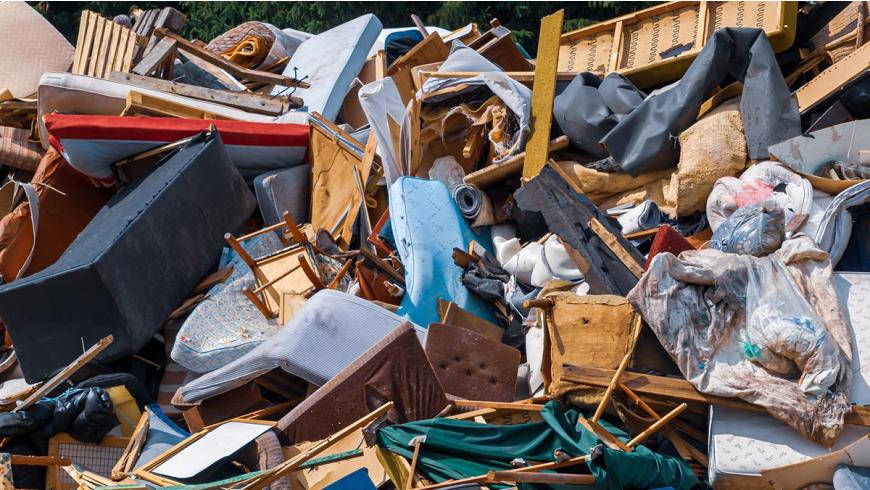The Truth About Fast Furniture: Next stop, the dump

America is throwing away furniture at a disturbing clip. According to the Environmental Protection Agency, 12 million tons, 450% more per year than in 1960, now finds its way into landfills.
The problem accelerated with the arrival of Covid. That event seemed to trigger consumers’ willingness to make larger purchases online, leading to a rapid rise in “fast furniture” — relatively inexpensive, trendy, made from substandard materials and designed to catch your eye, last for a year or two and then fall apart so you must buy again. It has given a whole new meaning to “one nightstand.”
The new reality has become quite clear for Tiffany Cassidy, co-founder of Lagnappe Custom Interiors on St. Thomas, V.I.
“I am just back from an industry trade show where I listened to experts talk about buying trends,” she said. “Forget the avocado toast stereotype. Millennials have so much buying power and even Gen Z is starting to buy homes. These are segments that are very comfortable making large purchase decisions online and the last few years it has exploded.”
That explosion is a big driver of the fast furniture trend. Unfortunately, what’s missing in the transaction are information and full disclosure.
“People see a picture of a dresser online, see the price, but they don’t understand the basics of materials and construction and finish, and the website isn’t always forthcoming with that information,” Cassidy said. “So you end up with a homeowner who leaves a glass of tea on a table for an afternoon and the veneer buckles and they’re angry that the furniture didn’t hold up.”
That veneered piece can’t be repaired so off it goes to an already stressed landfill. Worse still? That’s not fast furniture’s most grievous impact. The manufacturing is even more problematic.
As reported recently in Discover Magazine, fast furniture is largely made offshore where the manufacturing process exploits cheap labor and gorges on lumber products, leading to illegal or unsustainable logging and all of the nightmares associated with deforestation. Toxic chemicals used in manufacturing such as formaldehyde and chlorinated flame retardants pose a health risk to the builders and those who put the furniture in their homes. All of which frustratingly few consumers know about or comprehend.
The key, according to experts cited in an article on fast furniture in The New Republic, is “radical transparency” from manufacturers. Because fast furniture relies on supply chains that are often long, convoluted, unregulated and uncertified, there’s no way for a consumer to know who really produced the piece, how it was made and with what materials.
“People who have gotten comfortable shopping online need to slow down and be discerning with information, or the lack of it,” Cassidy said. “When investing in furniture you should expect great customer service, which is something you won’t get from (fast furniture websites).
“Expect finish samples and material samples. Expect detailed specifications on the material and where it comes from and how it’s used. You should look for companies that offer multiple options for material and finish and paint colors to get precisely what you want. Expect that someone knowledgeable can answer all of your questions. It’s about falling in love with the furniture and sharing the values of the maker.
“That’s why it’s such a joy to show my clients how a Gat Creek piece is made, why it is unique,” she added. “The whole thing is handmade in the USA from solid hardwood harvested nearby. You’re buying real furniture, something that can be passed down or passed along to another owner. If you decide to change it you can refinish it, repair it, or repaint it.”
This kind of conscientious durability and long life-span strikes particularly close to home for Cassidy. Her island home is just over 100 square miles, its growing landfill she drives by every day. “The carbon footprint of all this fast furniture made overseas, shipped, warehoused, trucked around the country, thrown out, replaced … It’s so much wiser to buy what you love and buy it once. Once is enough”
